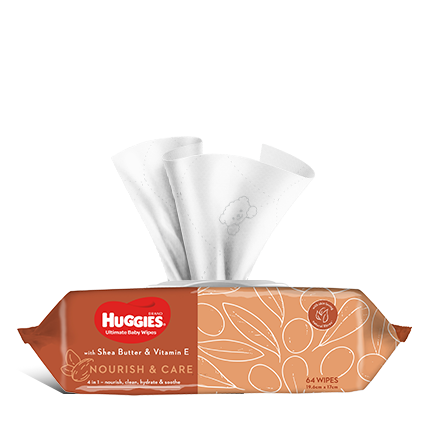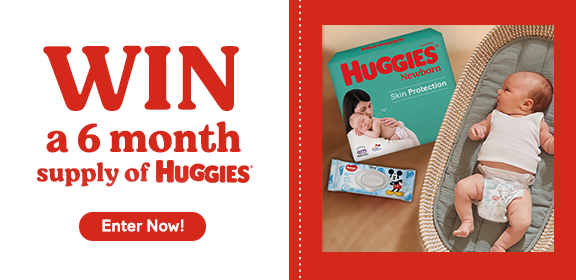One of the most exciting aspects of preparing for a new baby is organising their nursery. Thinking about where your baby will eventually sleep and what they are going to sleep in takes some planning and discussion. Practical factors such as the size of your house and the number of children will determine whether the new baby will have their own room, or need to share with an older sibling. There is too much individual variation in families and homes to say what is the best option. Parents generally make their own decisions based on what will work in their home and what suits their family.
No matter how much planning is done though, most parents want their newborn to sleep in the same room as they do. The parent's bedroom is recommended as the safest place for babies to sleep for the first 6 to 12 months of their life. Placing your baby's cot or bassinette next to your bed will allow you to see them and feel reassured they are safe. Parents and their newborns are not meant to be physically separated and they need to be close to each other. After 12 months, most parents are ready to move their baby into their own room or nursery.
Cot or Bassinette – Which is Better?
This is really about personal choice. Some parents prefer the size of a bassinette because it takes up such a small amount of space and is portable. Mothers particularly, can feel a bassinette creates a cosier sleeping atmosphere for their small baby. Other parents like to use a cot from birth and avoid the inevitable transition to one when the baby is around 3-4 months old.
The major considerations are the safety aspects of both. If a cot or bassinette has been handed down in a family and has not been bought new, it needs to be checked as safe so it does not pose a risk of harm. A mandatory Australian Standard Safety standard applies to cots. Check here for information about bassinettes.
Bassinettes look sweet, though parents need to be careful about using bumpers, ribbon ties and lots of loose bedding in them. Those that have a rocking function can be risky, especially with young toddlers in the house. Bassinettes with wheels need to have a locking mechanism as well.
Whether you use a bassinette or a cot, make sure it is positioned flat on the floor. There is no benefit to raising the head of a bassinette or cot and doing this does not help with reflux.
If your newborn won t sleep in their bassinette
Some babies don t settle well when placed into their bassinette. Even if they seem deeply asleep in their parent's arms before being transferred, they wake and cry before their parent gets to the door. Generally, the reason comes down to the baby preferring the safety and security of being held. Often, they will go off to sleep when being fed or held and wake as soon as this parent assisted settling is stopped. It's not so much the bassinette they're protesting about, but the fact they're not being held anymore.
Try placing your baby into their bassinette when they're showing tired signs. Gently position your baby on their back and pat and soothe them when they're already out of your arms. At first, they may protest and cry though with time and practice, your baby will learn some small and early steps towards self-settling. Remember, it's important that you reassure and cuddle your baby if they need it.
Safe Sleeping Guidelines
- Sleep your baby on their back from birth, not on their tummy or side.
- Sleep your baby with their face uncovered. Don t use doonas, pillows, sheep skins bumpers or soft toys in their cot.
- Keep your baby smoke free, before and after they are born.
- Make sure your baby has a safe sleeping environment with a safe cot, safe mattress and safe bedding.
- Sleep your baby in their own safe sleeping environment next to your bed for the first six to twelve months of their life.
- Breastfeed your baby.
Check here for more information on safe sleeping.
Co-Sleeping or Bed Sharing
The safest place for your baby to sleep is in their own safe sleeping space. For each and every sleep, day and night, it's important to follow the safe sleeping guidelines.
In many societies, parents co-sleep with their children. In Australia, parents who follow an Attachment Parenting approach see co-sleeping as a vital part of their overall philosophy. Co-sleeping is thought to help with bonding, successful breastfeeding and to promote better sleep. Some experts believe co-sleeping is protective to children; and even when they're asleep parents retain a sense of surveillance over their child.
If you choose to co-sleep with your baby, check here for information. For the majority of Australian parents, their children have their own safe cot to sleep in.
If parents do choose to co-sleep, there are some important safety aspects to consider.
- Babies are at great risk if they sleep on their tummies or sides and/or their face is covered by bedding.
- Babies must not share their bed with other children or pets.
- Parents who smoke, take medication which interferes with their sleep, have drunk alcohol or who are obese should not co-sleep with their babies.
- The bed needs to be firm and safe, with a firm fitting mattress and no gaps where the child could fall through and be trapped. Waterbeds, sofa/couches, lounges, bean bags, pillows, doonas and quilts should not be used.
- There is a risk of a child falling onto the floor from a bed or becoming trapped between its parents, particularly if they are overweight or heavy sleepers. Even pushing a bed up against a wall is not protective as babies can get trapped between the wall and the bed.
- If you do choose to co-sleep, position your baby at the side of one parent, not in-between you both.
The major issues to consider with bedding are safety and hygiene.
Other tips
- How practical and easy is it to wash bedding. Being able to throw sheets and blankets in the washing machine and then line dry them will save you a lot of time and energy. Avoid harsh detergents with strong perfumes; these can irritate a baby's skin.
- Try to have enough bedding so you do not have to constantly wash. Babies aren t careful about where they vomit and don t hold on until there is a nappy underneath them.
- Aim for 100% cotton and natural materials where you can. Babies skin can easily be irritated by artificial fibres. Static electricity builds up in nylon blends and cotton, wool and linen blends feel better against the skin.
- Avoid using pillows until your baby is in a bed. Pillows are a safety risk for small babies who can wedge their heads under them. Older babies can use a pillow as a step to hoist themselves up and out of their cot.
- Layering is the secret to warmth, rather than one heavy blanket. It is better to tuck your baby in with a lighter weight blanket over the top, rather than use one heavy doona or blanket on them.
- Use a safe sleeping bag which is the correct size for your baby.
- Aim to position your baby in the lower end of their cot rather than towards the top. Resting their feet on the bottom cot rails will stop them from sliding under the covers and their face being covered.
For more information see Baby sleep or Baby Care
Edited and reviewed by Jane Barry, Midwife and Child Health Nurse July 2021.


Last Published* May, 2024
*Please note that the published date may not be the same as the date that the content was created and that information above may have changed since.




















